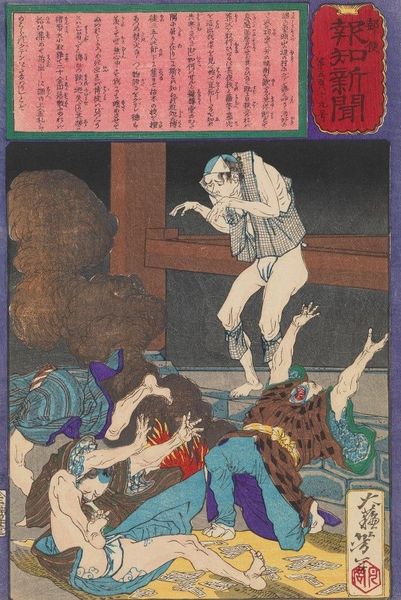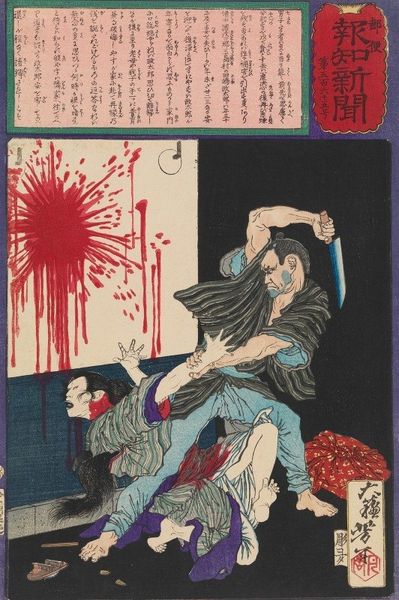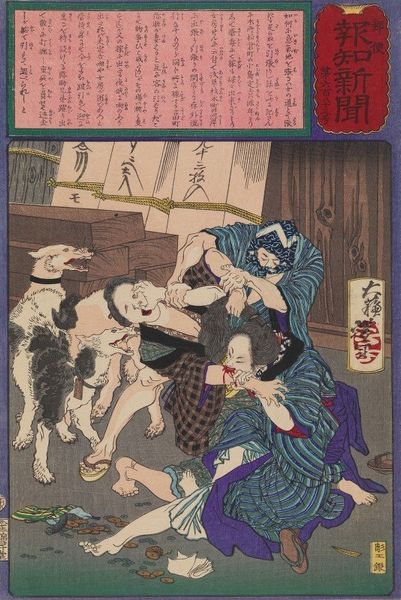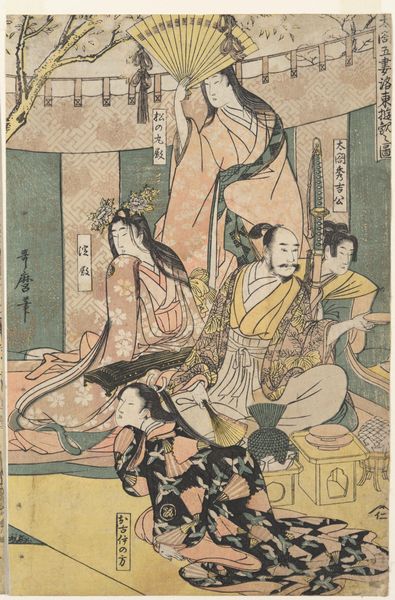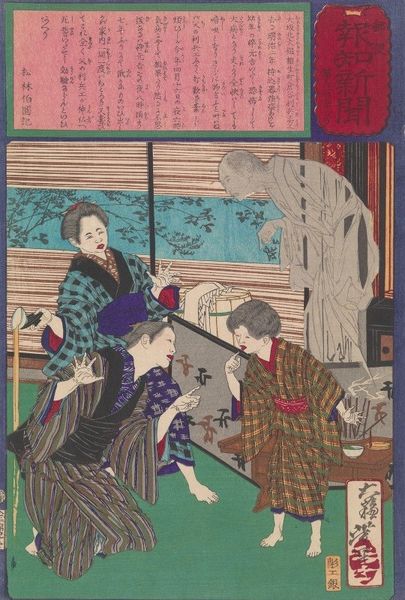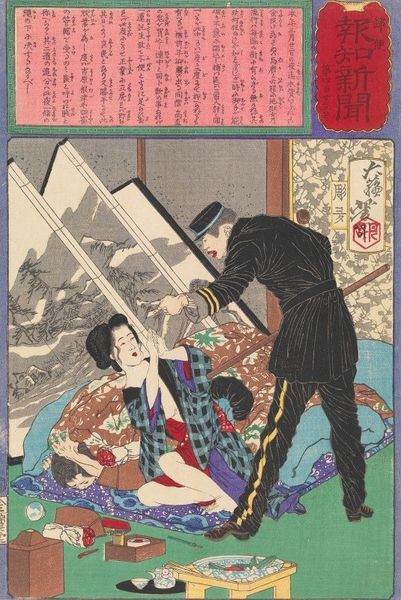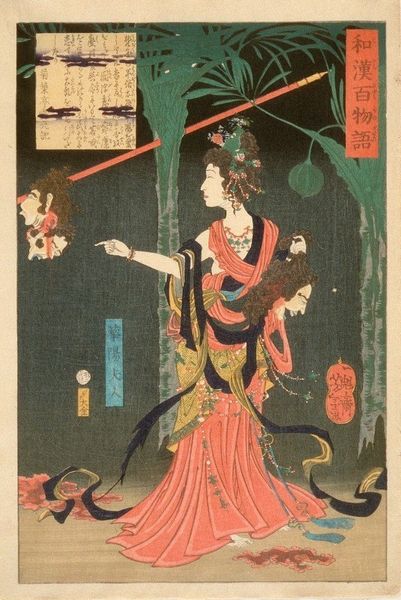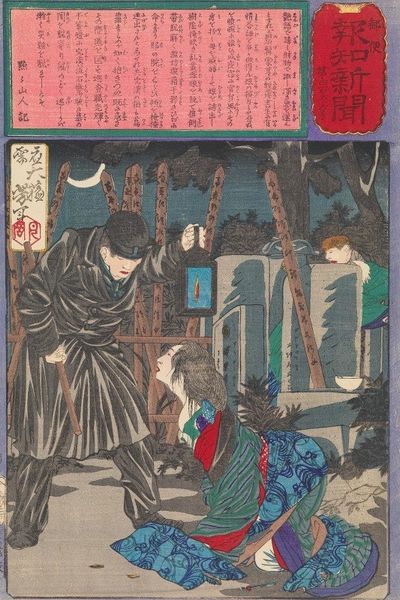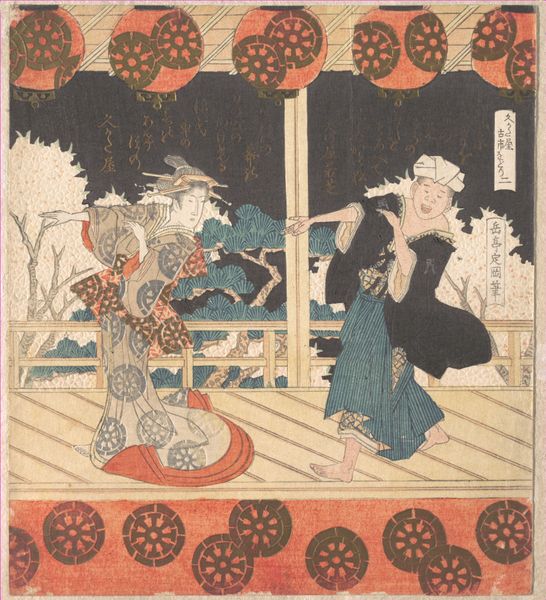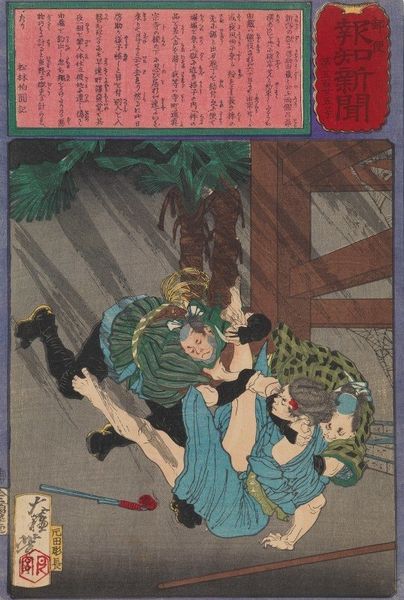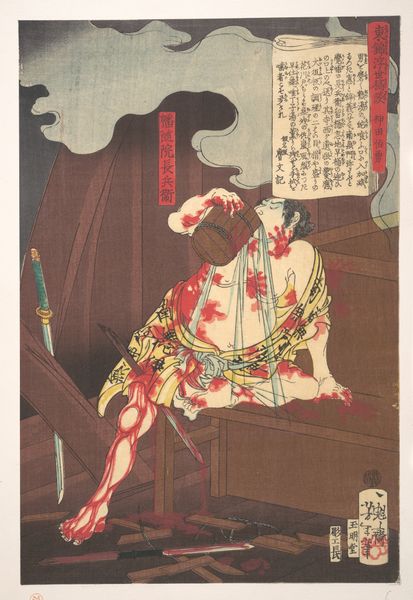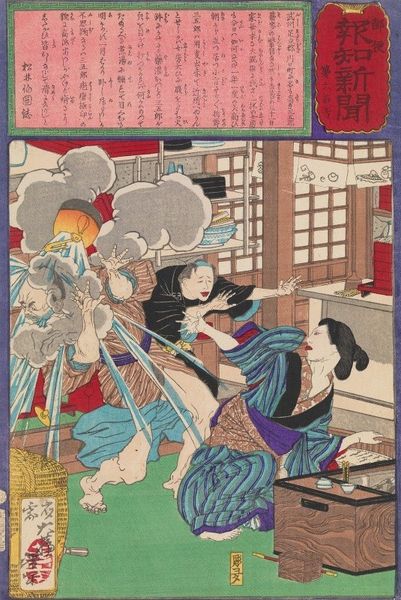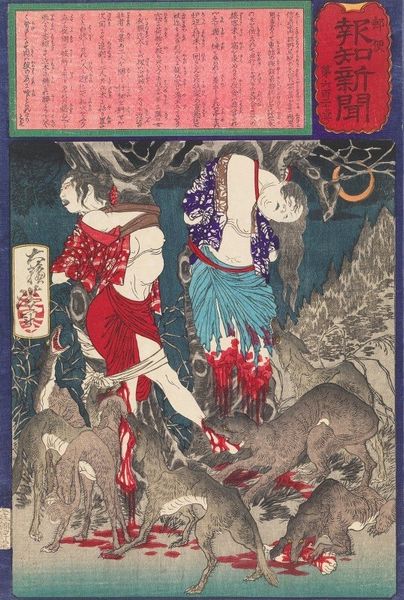
Copyright: Public Domain: Artvee
Curator: Right, let's talk about this print. This woodblock print by Tsukioka Yoshitoshi, dating back to 1875, is titled "Kodembō no Shōshichi, an Osaka Thief, Tormented by Ghosts." Quite a mouthful, isn’t it? Editor: My word, it’s certainly striking! There's an unsettling beauty to it, this vortex of wraiths encircling a figure consumed by terror. The scene has a real ghostly glow—it almost makes my skin crawl. Curator: Yoshitoshi was deeply engaged with the social upheavals of his time. Woodblock prints, beyond being mere artworks, functioned as news vehicles—narratives of crime and societal anxieties. Editor: So, like a visual tabloid of sorts? Curator: Precisely. And Shōshichi, our tormented thief, would likely have been a notorious figure in Osaka, with the print amplifying his infamy through supernatural drama. He embodies a moral lesson, wouldn’t you say? Editor: A morality play etched in shades of torment... yes, I can feel it. His expression—that frozen scream—it’s not just fear; it’s the agony of guilt made visible, almost palatable. But is there any kind of empathy being constructed here, a consideration of poverty driving him to his end? Curator: Empathy is a complex emotion here. Yoshitoshi doesn't explicitly condone or condemn. Rather, his compositions force us to reckon with the consequences of transgressions within a cosmos where retribution isn't solely earthly. Think about that sword about to strike; the detail almost pulls the viewer into Shōshichi's living nightmare. Editor: I'm still haunted by the knife in one specter's head! So brutally effective. Yet it also underscores the theatricality of the scene, a macabre dance of demons come to collect. The composition is just amazing! It brings home the artist's view that the wicked cannot escape earthly justice! Curator: Yes, this is an attempt to reinforce public morale—the story's spectacle amplified. Even in its fantastic elements, you see the imprint of societal beliefs about justice and moral consequence. Editor: Thanks—it definitely shifts my perspective! Knowing Yoshitoshi used his talent as both an artist and a communicator lends real depth to these images of horror. It makes us think about the nature of human transgression. Curator: Indeed. Hopefully this helps viewers appreciate these floating worlds, as records, reflections, and powerful pronouncements all at once.
Comments
No comments
Be the first to comment and join the conversation on the ultimate creative platform.
